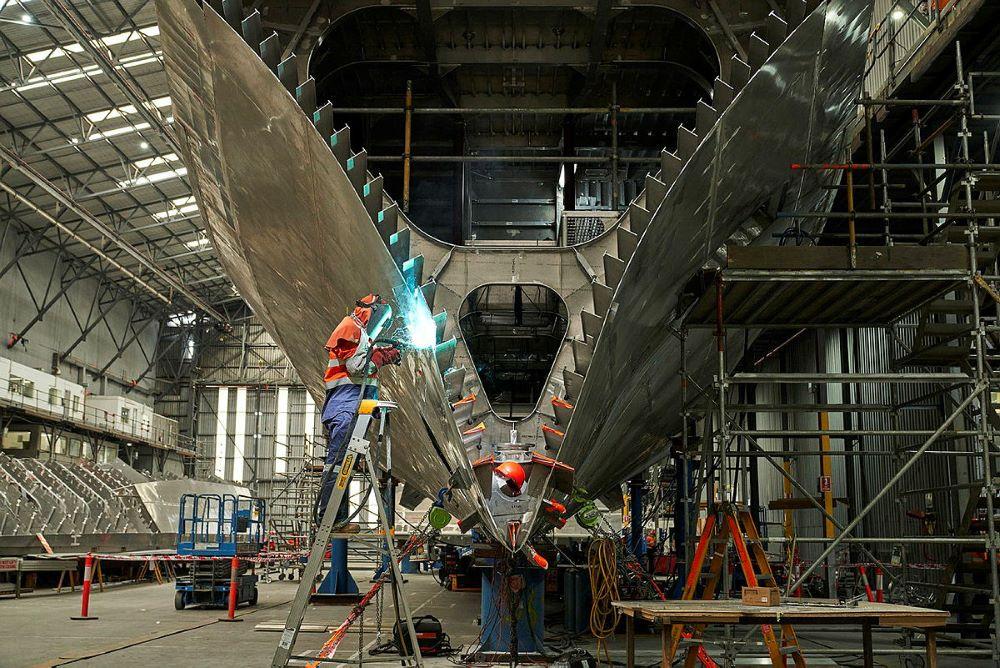Time for a rethink of Australia’s approach to defence industry
Posted By Stephan Fruehling and Graeme Dunk on December 18, 2023 @ 13:30

Australia faces a deteriorating geostrategic environment, and the recent defence strategic review has found that the military’s force structure is not fit for purpose. In line with the review’s recommendations, the government has adopted the concept of a ‘focused force’ and of ‘national defence’—the defence against potential threats arising from major-power competition—as a new approach to defence planning and strategy.
The introduction of national defence will require a coordinated, whole-of-government approach that includes enhanced sovereignty in defence industrial capacity in key areas, and a renewed focus on national planning for defence preparedness.
Since the 2016 defence white paper [1], industry has been considered a ‘fundamental input to capability’ (FIC), in recognition of its role as a critical enabler of defence activity. Without a defence industry of appropriate size and shape, the ability of the Australian Defence Force to operate as required would be extremely limited.
But the war in Ukraine has demonstrated once more that the importance of defence industry goes further than that: Ukraine is now constantly producing (and consuming) drones and weapons in large numbers, integrating new capabilities into its forces on the fly, and establishing new production of indigenous and foreign platforms. In other words, deep and adaptive industrial capabilities are critically important in a major conflict because they are what sustains a country’s ability when its forces need to be expanded, replaced and evolved.
The Department of Defence’s treatment of industry as a FIC isn’t consistent with the move to national defence and the new realities of major war. Viewing industry as a FIC compartmentalises thinking around domestic industrial support to Defence to discrete capabilities; limits consideration of the domestic defence industry as a system with application across multiple capabilities; and inhibits the development of broader concepts such as industrial surge, mobilisation and preparedness that will be required during periods leading up to, and including, conflict.
Defence industry in national defence: rethinking Australian defence industry policy [2], a new report by the Australian Industry Group and the Australian National University, argues that a new way of looking at the domestic industrial base is required. Put simply, industry needs to be considered as a national capability, rather than simply a means to produce individual military capabilities.
The report highlights that, although the government has repeatedly acknowledged the strategic value of certain capabilities and the critical contribution of local industry to delivering those capabilities, the focus has remained on achieving value for money and minimising project risks through the acquisition of military-off-the-shelf solutions.
While attempts have been made to build specific industrial capability (shipbuilding and the guided weapons enterprise are examples), they have been hampered by a lack of clear purpose and intent, a lack of direct connection between strategic objectives and industry policy, and a continuing project-by-project approach. The result is a domestic defence industry that is poorly structured and not equipped to deliver what the ADF is likely to need in a major conflict.
This is simply not good enough for the situation in which Australia finds itself. As one observer of US policy recently commented [3]: ‘You go to war with the industry base you have, not the industry base you want.’
Instead, Australia must consider industry as a capability. Drawing on the approach to defence industry in France, Sweden, Israel and Canada, the report argues that this will require substantial changes in both defence industry and the broader national industry policies. It will require the government to define clear industry requirements as part of its overall defence planning and force design process.
Defence industry must be embedded within and managed as part of Australia’s broader national industry structure and policy. That will require strategically prioritised defence industries to be actively supported to achieve scale and be positioned for surge and flexibility. It will also require changes to the way that value for money is assessed. If industry is a capability, the government needs to appoint a capability manager for it who is resourced and empowered to monitor and develop Australia’s defence industrial base.
The government has an array of powers that allow it to shape and foster the industrial structure that it wants to develop, and to control and incentivise industrial behaviour. It is not just a contractual partner to industry, but can also be legislator, regulator, provider of direct or indirect support, landlord and part or full owner. If the government is to develop and manage defence industry as a national capability, it is important that it make use of the full range of these tools.
A sovereign but internationally linked defence industry is a necessary asset during a period in which the risk of major conflict is rising. Action needs to be taken now to set the nation on the path to the industrial capability it needs to meet the challenges of today’s strategic environment.
Article printed from The Strategist: https://aspistrategist.ru
URL to article: /time-for-a-rethink-of-australias-approach-to-defence-industry/
URLs in this post:
[1] 2016 defence white paper: https://www.defence.gov.au/about/strategic-planning/defence-white-paper
[2] Defence industry in national defence: rethinking Australian defence industry policy: https://www.aigroup.com.au/globalassets/news/reports/2023/ai-group-sdsc-dind-report.pdf
[3] commented: https://warontherocks.com/2023/08/you-go-to-war-with-the-industrial-base-you-have-not-the-industrial-base-you-want/
Click here to print.